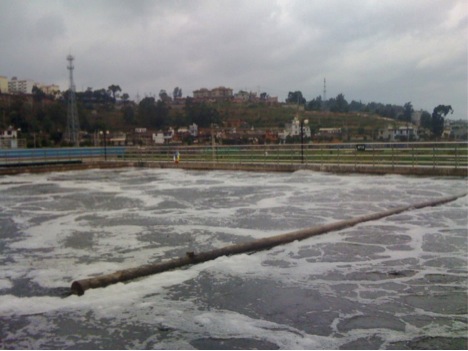Design Review of a $45 million WWTP Plant Expansion
A Case Study (download  )
)

Client:
Large International Engineering Firm
Help Requested:
- Review Process Design for a Very Large Australian WWTP with Intermittent High-Salinity Influent
Type of Treatment:
- Biological – Batch Reactor Activated Sludge
This firm implemented the design of a very large WWTP treating over 33,000 m3/d of municipal sewage in Australia. Of particular concern was the effect of large variations in influent salinity caused by tidal conditions at this seaside location. It is well known that biomass deflocculation occurs at high salinity, but the effects at intermediate and transitory concentrations are not well documented. Wastewater Experts, Inc. was asked to review and comment on the firm’s design. After much research and analysis, the following conclusions were presented:
- The plant was generally designed with adequate Biological Treatment Capacity – but only just.
- There were not adequate records to establish the range of the sudden large salinity variations that occur at the location. But making certain assumptions, it was probable that floc dispersion would occur following these spikes. These would in turn require instantaneous remedial action to avoid effluent permit violations. Early detection and warning were strongly recommended.
- The design WAS (Waste Activated Sludge) quantity was significantly under-estimated by the design team. Sludge handling processes would need to be upsized for the greater yields that would actually occur.
- Wintertime operation requires higher MLSS levels to achieve necessary nitrogen removal. Wastewater Experts analysis showed that the performance required was just achievable with the assumption of a rapid-settling biomass. However, typical low-average to poor biomass-settling characteristics would likely result in failure of the effluent solids parameter in winter; this would also increase operator attention requirements substantially. This meant that the design should increase the Aeration Basin volume. But if the volume was not to be increased, then existing polymer dosing capability should be increased, and the Biomass Settling in wintertime would require vigilant monitoring.
